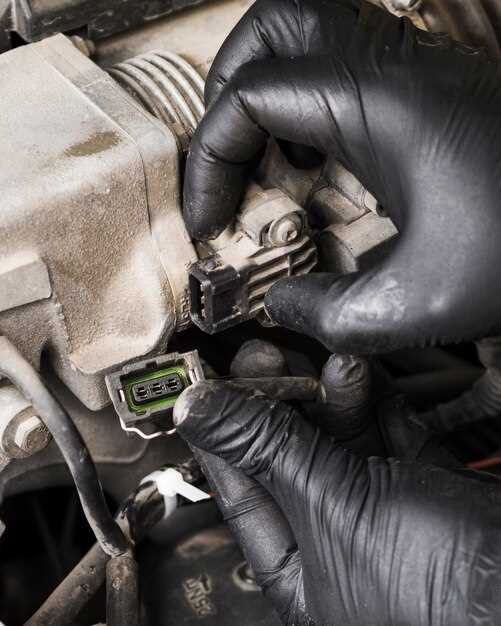
Engine knocking is a common concern among owners of older Toyota Land Cruisers. This distinctive noise can signal a range of issues, from minor tuning problems to more severe mechanical failures. Understanding the source of the knocking noise is crucial for maintaining the performance and longevity of these beloved vehicles.
The engine is a complex assembly of parts that work in harmony, and any disruption can lead to undesirable noises. In Land Cruisers, knocking can often be associated with factors such as improper fuel, worn engine components, or timing issues. Identifying whether the noise is coming from the top end of the engine, such as the valves, or the bottom end, like the bearings, is essential for accurate diagnosis.
In this article, we will explore the various causes of engine knocking in old Land Cruisers, the symptoms to look out for, and effective diagnostic methods. By addressing these issues promptly, owners can avoid more extensive repairs and enjoy the rugged reliability that the Land Cruiser is known for.
Identifying Common Sources of Engine Noise

Diagnosing engine noise in old Land Cruisers requires a systematic approach to identify the underlying issues. Various noises may indicate different sources of potential problems. Understanding these common sources can aid in effectively diagnosing the engine’s condition.
One of the most prevalent types of noise is a knocking sound, often linked to problems with the engine’s internal components. This noise typically arises from worn or damaged bearings, pistons, or connecting rods. A thorough inspection of these parts is essential, as they are critical for maintaining proper engine function and longevity.
Another common noise is a tapping sound, which may originate from the valve train. Issues such as loose lifters, worn rocker arms, or malfunctioning hydraulic adjusters can contribute to this type of noise. Accuracy in diagnosis is crucial here, as neglecting these components could lead to severe engine damage over time.
Additionally, a hissing or whistling noise might indicate an intake or exhaust leak. This can be diagnosed by examining the gaskets and connections for signs of wear or damage. Such leaks not only create noise but can also impact engine performance and fuel efficiency.
Finally, belt and pulley systems can cause squeals or chirps when they are worn or improperly aligned. Regular inspection of serpentine belts, timing belts, and associated pulleys is vital for early diagnosis and maintenance, ensuring that they’re functioning efficiently and quietly.
By identifying these common sources of engine noise, owners of old Land Cruisers can take proactive measures to diagnose issues early and prevent costly repairs in the future. Prioritizing maintenance will ensure a smoother and more reliable engine operation.
Step-by-Step Diagnostic Procedures for Engine Knocking
When diagnosing engine knocking in old Land Cruisers, it is crucial to follow a systematic approach. This ensures accurate identification of the source of the noise and effective solutions for repair.
1. Preliminary Inspection: Begin by performing a visual inspection of the engine. Look for any signs of oil leaks, loose components, or damage to the engine block. Ensure that all belts and hoses are intact.
2. Engine Oil Check: Inspect the engine oil level and condition. Low oil levels or dirty oil can lead to insufficient lubrication, causing knocking noises. Change the oil if it appears contaminated.
3. Sound Identification: Start the engine and listen carefully for the knocking noise. Take note of when the sound occurs–whether at idle, under load, or during acceleration. This information is vital for diagnosis.
4. Tuning the Engine: Check the ignition timing and adjust it if necessary. Incorrect timing can result in knocking due to premature ignition. Use a timing light to ensure accurate settings.
5. Fuel Quality Assessment: Test the quality of the fuel being used. Low octane fuel can contribute to knocking. Consider switching to higher octane fuel if knocking persists after other checks.
6. Inspect Spark Plugs: Remove the spark plugs and examine their condition. Worn or fouled plugs can impact combustion efficiency, leading to knocking. Replace any damaged plugs with the correct specifications.
7. Engine Compression Test: Perform a compression test on each cylinder to check for uniformity. Low compression in one or more cylinders can indicate internal problems, such as worn piston rings or valves.
8. Check for Detonation: Utilize a knock sensor, if available, to detect any signs of detonation. The sensor can help identify knocking conditions that are not audible to the ear but can cause engine damage over time.
9. Inspect Bearings and Rods: If knocking continues, examine the main and rod bearings for wear. A significant play in these components can lead to engine noise, indicating a need for replacement.
10. Professional Evaluation: If all previous steps do not yield results, consider seeking the help of a professional mechanic who can provide a more in-depth analysis of the engine’s condition using specialized equipment.
By following these diagnostic procedures, owners of old Land Cruisers can effectively identify and resolve engine knocking issues, ensuring better performance and longevity of their vehicles.
Tools and Techniques for Accurate Engine Noise Assessment

Accurately diagnosing engine noise, particularly knocking, requires a combination of specialized tools and effective techniques. Identifying the source of noise can significantly improve the reliability and longevity of old Land Cruisers.
One essential tool is a stethoscope designed for automotive use. This device allows a mechanic to isolate different engine components while listening for abnormal sounds. By placing the stethoscope on various parts of the engine, such as the valve cover and oil pan, specific areas of concern can be pinpointed.
An engine noise analyzer is another valuable tool. This device measures sound frequencies and can help identify the characteristics of noise generated by different engine components. By analyzing these sound frequencies, it becomes possible to determine if the noise is related to mechanical wear, detonation, or other issues.
Additionally, using vibration analysis equipment can provide insights into engine performance. This technique involves measuring vibrations caused by engine operation and comparing them to standard specifications. Excessive vibrations often correlate with underlying problems that can generate knocking sounds.
A thorough visual inspection is also crucial. Inspecting components such as the timing belt, tensioners, and pulleys can reveal defects that might contribute to engine noise. Ensuring that all engine mounts are intact helps eliminate noise caused by excessive movement within the engine bay.
Furthermore, utilizing an onboard diagnostics (OBD) scanner can uncover error codes related to engine performance. These codes can guide mechanics to specific issues impacting engine noise. Addressing fuel delivery or ignition timing problems can also help mitigate knocking sounds.
Finally, conducting a road test while monitoring engine performance in real-time can help correlate engine noise with operational behavior. Observing how the noise changes under different load conditions provides clues to potential sources of the problem.
By employing these tools and techniques, mechanics can accurately assess engine noise in old Land Cruisers, ensuring a thorough diagnosis and effective remedies for any knocking issues identified.
